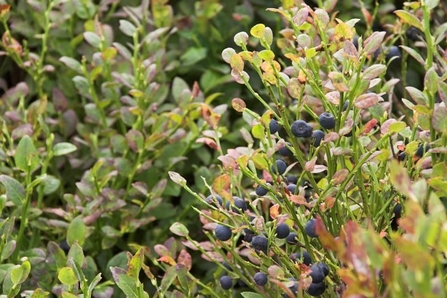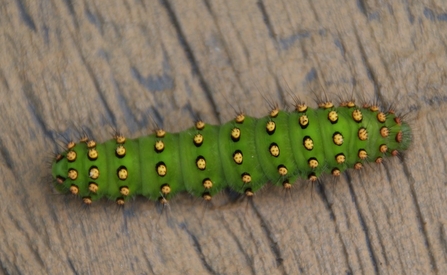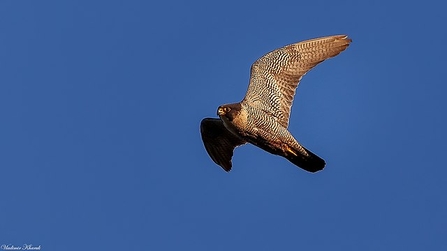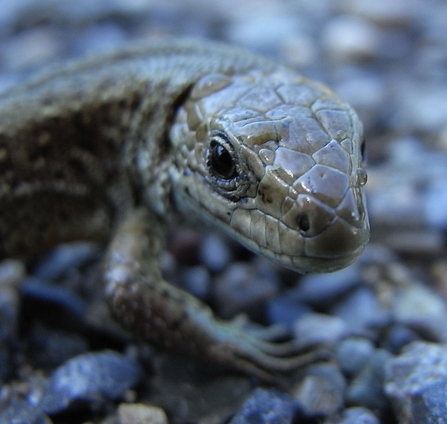Whinberry is the Shropshire name for bilberry, but the tiny dark blue wild fruits are far more delicious than the bought ones. Whinberry bushes are low-growing, about the same height as the heather (ling) it grows amongst, so picking can be a back-breaking pastime, but the harvest is well worth the effort! The other bonus is that it gets me down at the level of some of the smaller beasts of the moorland, which is a fascinating place to be.
Dr Cath's Nature Notes - August 2023

Bilberries (c) Colin Grice
Common heather is a larval foodplant of the emperor moth, the only member of the silk moth family we have in Britain. In August I look forward to seeing fully grown (final instar) caterpillars, as long as my little finger and about as fat, vivid green with black hoops like a dodgy rugby jersey. Each black stripe has yellow wart-like spots along it, from which sprout tufts of black hairs – quite unmistakable. Fox moth caterpillars are also on the move, the black furry ‘wooly bears’ munching on heather and bilberry before overwintering as fully grown larvae. Hunting for wooly bears was a favourite childhood pastime, and we never went whinberry-picking without a matchbox in our pocket for these temporary pets!

Emperor Moth Caterpillar (c) Cath Price
Adopting a more upright posture to give my back a chance to recover I scan the plants around me for bilberry bumblebees. These are particularly delightful bees, with bright yellow bands across the thorax and big, rich orange-red bottoms, and I‘m always thrilled to see them. They’re a nationally scarce and declining species, so we’re very lucky to have them here in Shropshire. In late summer the new queens from this year’s brood will be feeding up on pollen and nectar, preparing to hibernate, so I’ll be watching the clumps of flowering heather for them. I sponsor a bilberry bumblebee through Shropshire Wildlife Trust, and always wonder if that one there is ‘mine’!
Looking up a bit from bumblebee-level, I can scan the hills for birds. These wide upland areas have a suite of species I don’t see nearer home so it’s always a bit of a treat to see skylarks, pipits, wheatears, stonechats and whinchats, but my hopes are always for a red grouse, or even more exciting, a fast-flying merlin or peregrine falcon. Whinberries forgotten (but hopefully not overturned in the heather), I scrabble for my binoculars to watch the thrilling chase of a high-speed predator pursuing a dodging pipit, half of me willing the feisty raptor to make a spectacular kill, half of me hoping the frantic little prey, probably one of this year’s fledging, will dive to safety and live to see next Spring. Either way, a very special moment.

Peregrine Falcon (c) Vladimir Kharuk
As I get back to my harvesting, looking down again, I spot a dark gleam beneath the whinberry stems and freeze to complete stillness. I’m being watched by a wary common lizard, its ancient, unblinking gaze pinning me for a moment before it whisks away faster than my eye can follow it. Here be dragons – very tiny ones. Patches of bare ground and pathways make perfect basking spots for these little reptiles, but they usually detect the tremor of your footfall and flee before you get a chance to have a good look at them, so I feel privileged once again.

Common Lizard (c) Siga
I return from the hills a bit gritty round the knees, purple fingered, and thoroughly blessed by a few hours of peace in a beautiful place full of nature’s wonders, from wide, glorious landscapes to tiny perfect insects. I’ll sleep well, but only after a feast of whinberries!

